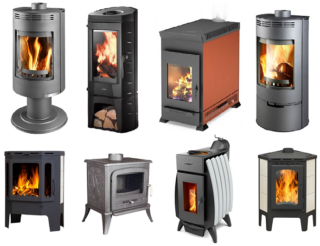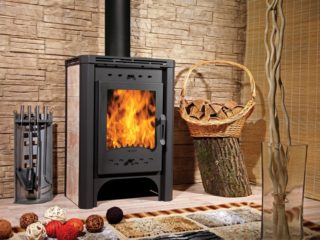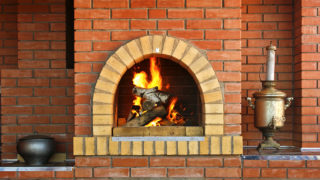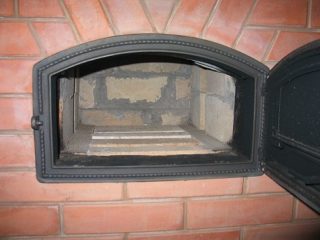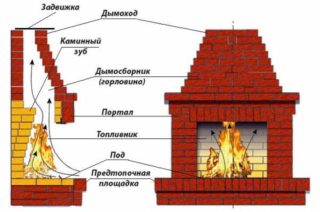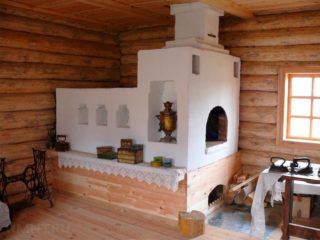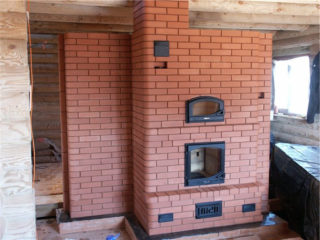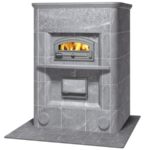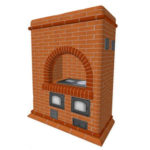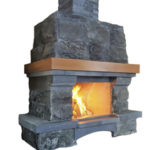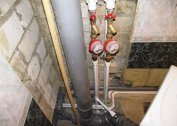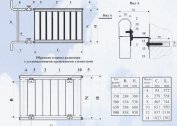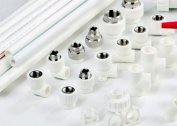Cold in the room will affect performance, provoke illness and other discomfort. To solve this problem, install a stove for the home. Before you put a heating device in your home, you need to take into account the main parameters, depending on which choice is made. Initially, you should find out how many rooms are heated, as this determines the type of product being installed.
The benefits of wood heating
The installation of wood-burning stoves for a house is considered a forced occupation. Due to several features, this type of heating is not very suitable for heating private homes for regular residence.
A wood stove has the following advantages:
- Affordable price. In a number of regions, firewood competes with gas.
- Good autonomy. There is an option to install heating, which will not depend on communications.
- Microclimate. Most homeowners install a wood-burning heating stove for a house or a bath, taking into account aesthetic considerations.
Wood heating is widely used in private homes, saunas and country houses, which are located in areas where there is no centralized communications.
Furnaces for the home, regardless of the material, have similar parameters:
- In metal and brick products in the firebox, open fire.
- When the furnace body is heated, the room will be filled with warm air.
- Combustion products will exit through the chimney.
- In the chimney, proper draft is realized for the proper operation of the furnace.
- Combustion is only possible with oxygen.
Each owner of the house decides by himself what means for the equipment of the heating system he has. If you have certain skills, you can build an oven for heating your home yourself.
Materials for the manufacture of wood-burning stoves
Heating stoves for summer cottages are made using brick, cast iron or steel. Regardless of the materials used, they are located in various places.
Cast iron stoves
The heating of cottages with the help of cast-iron stoves is often used. They are made by casting. Due to the high fragility of cast iron with small parameters, the products themselves have a large mass. Of the pluses distinguish:
- fast heating;
- the ability to do it yourself;
- large range of sizes;
- adequate price;
- bright style;
- robust construction.
With sudden changes in temperature, cast iron cracks. Significant flaws may occur when cold water gets on a hot coating.
Steel heating structures
They have a lower mass than cast iron products. Therefore, their transportation and installation will not require much effort. They can be easily moved around the perimeter of the cottage, if they have small dimensions.
The advantages of stoves for a house made of steel and cast iron are similar, since the materials are classified as metals. But steel is more durable, so the price is higher. The finished heating stove is welded from separate sheets.
Wood-fired stoves
Often there are reviews of the low efficiency of brick ovens. Usually this is due to the fact that the stove is made with violations of the basic rules. Modern techniques allow you to build products with high efficiency. The main advantages:
- increased strength;
- prolonged use;
- slow cooling;
- bright style;
- great functionality.
Brick stoves need a solid foundation that can withstand heavy weight.
Metal stoves for the house will give off heat at the moment the fire burns.Stone products will maintain a comfortable temperature performance after fuel combustion. This is possible due to the ability to retain heat.
Furnace for furnace
The firebox is the main and most complex structural element. For fireplaces they produce fireboxes with a door made of durable glass, for products in the kitchen - with deaf. When creating a furnace house, they select the finished furnace on their own. It should fit in the dimensions of the selected project.
The cheapest fireboxes made of sheet metal and composites are suitable for the room in which the temporary - country house, seasonal rented dwelling live. With a constant firebox, they quickly fail, for a home stove a cast iron product is required.
Convective systems
Product parameters are determined by the scheme of gas convection inside the structure.
Flowing
Designs have high efficiency. In domestic conditions, they have difficult technical disadvantages. For example, an English fireplace, in order to get an acceptable efficiency, must have a tent-smoke trap with a chimney at a height of 5 m. The Russian stove is complicated in execution, only 1 room is heated. Continuous burning furnaces are unaesthetic, sometimes fire hazardous.
Channel
Popular types of stoves are “Dutch” and “Swedish”. They can run on wood and other solid fuels. 4 rooms are heated simultaneously. Efficiency is rather weak: on good fuel, the indicators are approximately 50%. It is possible to reach the maximum efficiency indicators only with the number of 3 chimney turns. However, the product will then be difficult to clean.
Duct stoves are potentially fire hazard: if you close the view until the fuel burns out, the room will be filled with carbon monoxide.
Bell-shaped
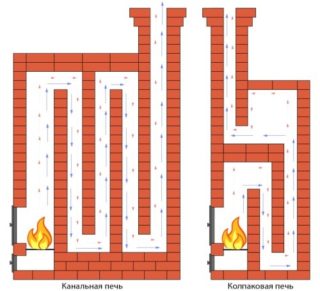 The efficiency of such products sometimes exceeds 70%: the smoke lingers under the arch until it burns out. This helps regulate traction. When the mouth of the furnace is made in the form of a hail, it is possible not to close the view at the end of the flood.
The efficiency of such products sometimes exceeds 70%: the smoke lingers under the arch until it burns out. This helps regulate traction. When the mouth of the furnace is made in the form of a hail, it is possible not to close the view at the end of the flood.
The main disadvantage is the upper heating: the heat is concentrated in the upper part of the stove, cold air will stagnate above the floor. Products with a lower outlet into the chimney or multi-bell constructions do not have such a disadvantage.
Combined
Efficiency of more than 80% is achieved in such products due to the use of expensive special materials in the design. These are mobile metal furnaces in which their compact size and low weight justify their high cost. In a wooden house, the product is useful as a summer cooking stove (installed in the corner of the room).
Varieties of furnaces
A heating stove is an excellent solution for a private home. The main components of the models are similar, but the various stoves have their pros and cons, installation and application features.
English fireplace
Such a product is rarely used, but has certain aesthetic advantages. The castle fireplace is heated only by natural fuel. The furnace is open, manually assembled. Adding a water circuit to the device will allow heating the rooms with the help of a coolant that passes through the heating system.
Russian stove
In terms of its parameters, the product is quite functional, but ergonomics leaves much to be desired. Due to the features of the device, the stove has disadvantages:
- uneven heating of the room;
- lack of efficiency;
- big sizes;
- insufficient heat transfer (the largest heating area is not more than 45 sq. m);
- long warm-up.
The pluses include universality - they use the Russian stove to heat rooms and cook food. In addition, she can work on straw and brushwood.
Dutch woman
The product does not meet current requirements due to poor efficiency. Such devices have the following advantages:
- simple installation;
- the ability to modify;
- resizing;
- low cost of construction work;
- elongation;
- quick warm up;
- sufficient heat transfer.
Such a product is used for burning coal of remote rooms - firecrackers, for example. Heats only 1 room.
Swede
Features of the oven include an oven operating as a heat emitter. Before installing the product, you need to familiarize yourself with the drawings with the order. The storage tank can be located in the drying niche and above the stove. Installing the product in the living room is pointless, the brow of the Swedish stove goes into the kitchen. However, in any situation, the device will show itself well only in a private house of 1-3 residential premises.
Finnish stoves
Such products come in several designs: a smart stove for a bath, a heating and a stove. The first will differ from the potbelly stove only by the long rut of the firebox, which is displayed in the waiting room. It is a high-tech collapsible metal construction. The release is carried out by various companies: Harvia, Kastor, Narvi, etc.
Stone stove
The heat capacity of most varieties of stone exceeds that of brick and cast iron. Because of this, the product cools and warms up longer. Due to the hysteresis, the efficiency starts to fall. Brick and cast iron in this matter are more preferable. A stone for stoves is suitable only for certain varieties. In addition, it must be selective, without chips and other defects.
- Finnish stove
- Swede
- Stone stove
Which oven to choose
To choose a stove for the home, you need to consider such parameters:
- If appearance is important, you should pay attention to the English fireplace or Russian stove.
- To heat a small house with adjacent rooms, a Finnish cast iron stove is suitable.
- For 2 or more floors, a gas boiler is suitable.
- When the stove is not bottled gas, the stove is built on the basis of the stove.
There are many types of heating stoves. The choice will depend on the purpose of use of the product and the parameters of the room.
